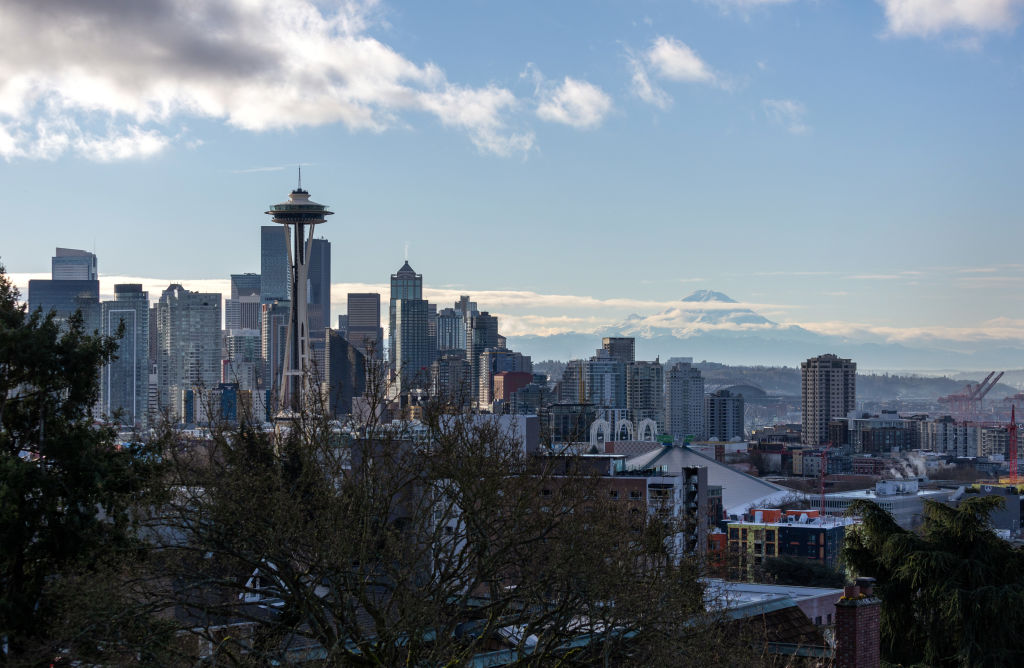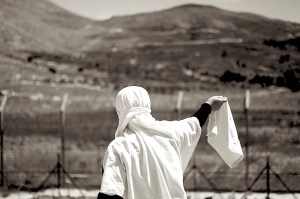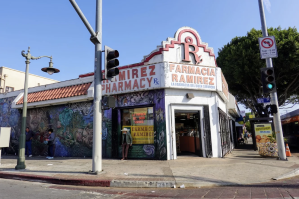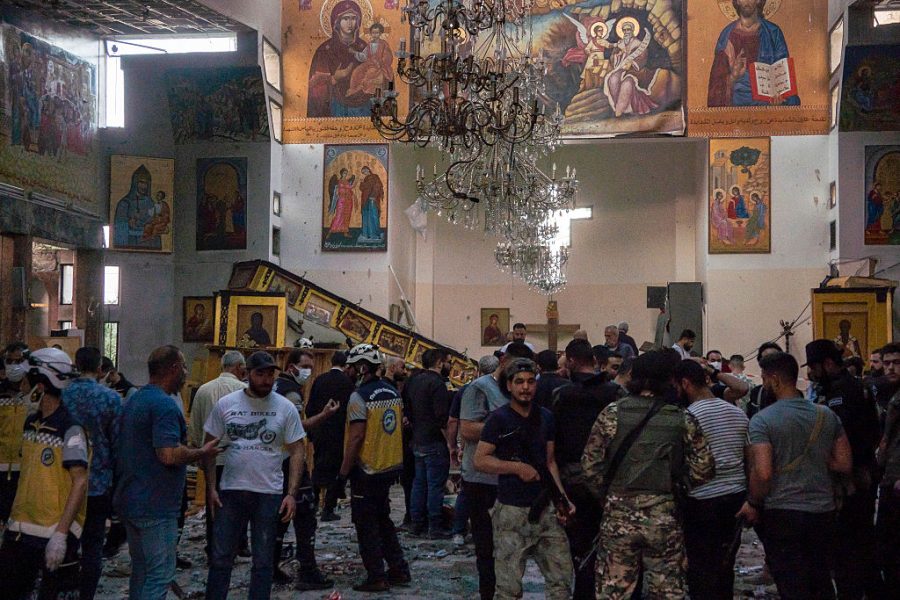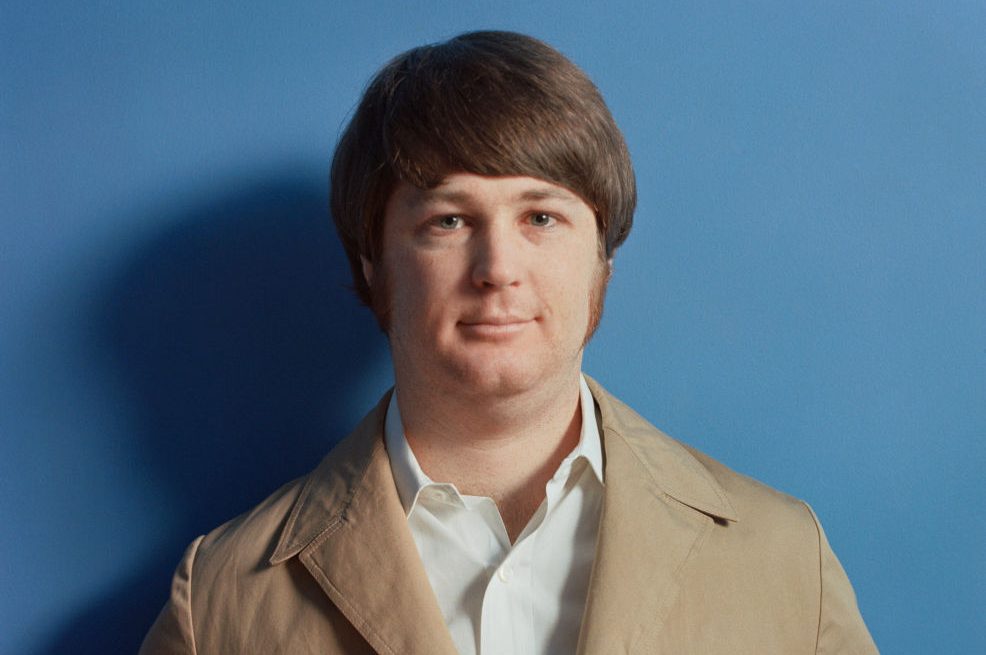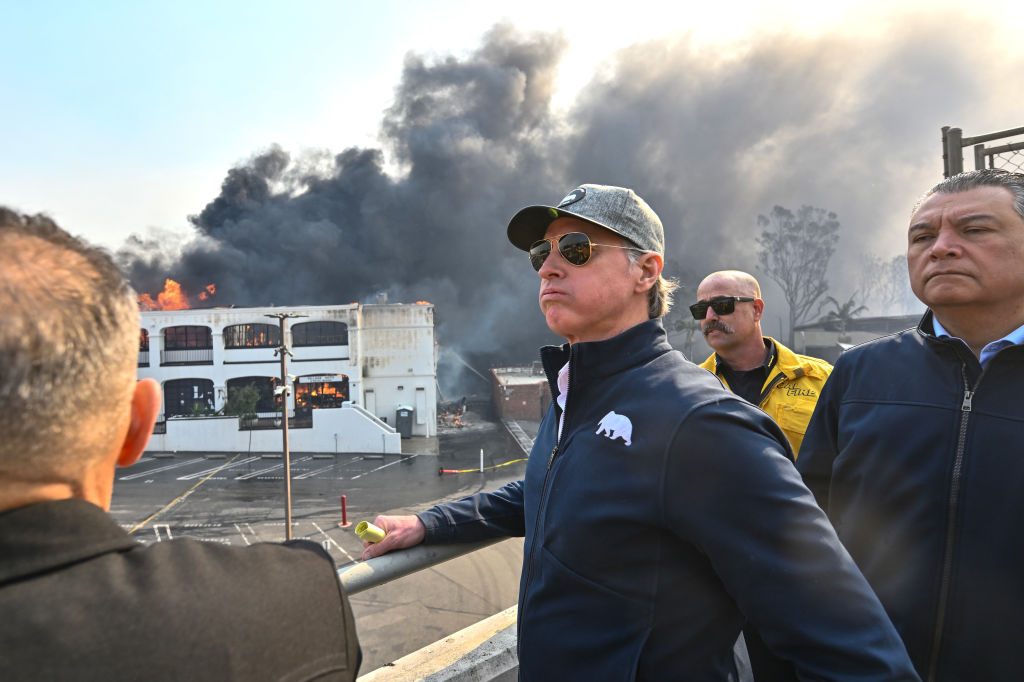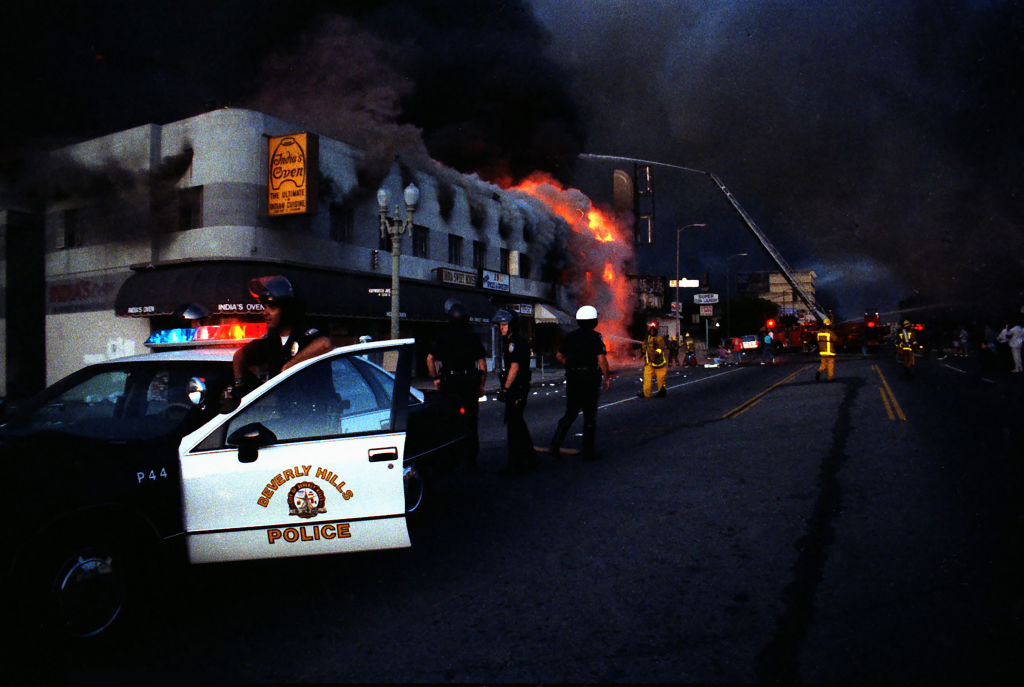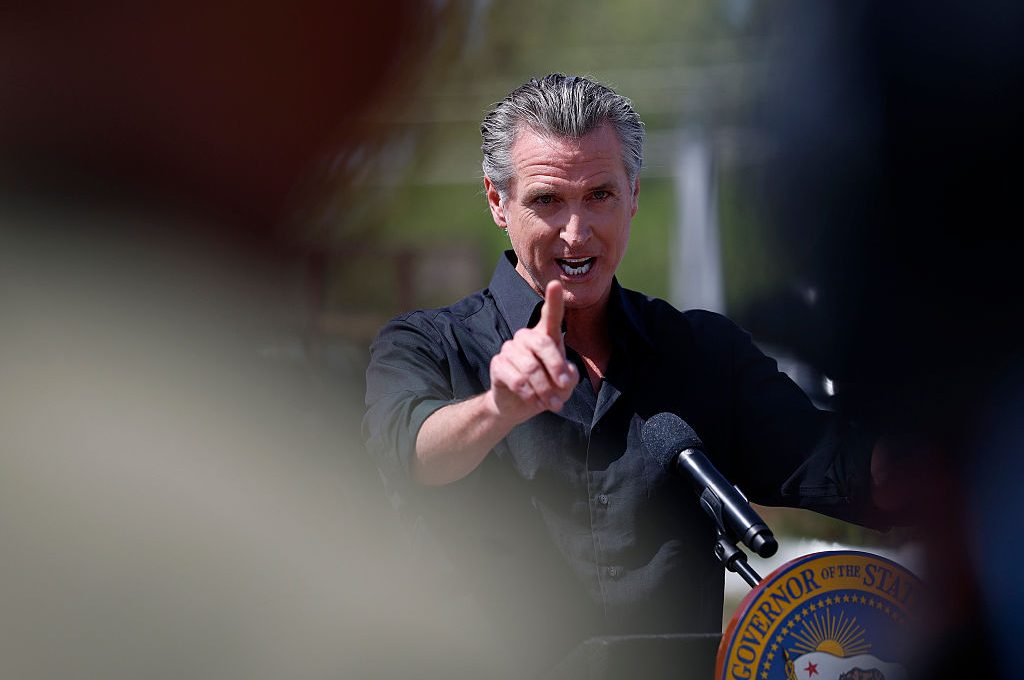At around eleven in the morning on February 28, 2001, I was standing in front of a mirror in my home in suburban Seattle, adjusting what remained of my hair prior to driving downtown to meet a friend for lunch, when the ground began to shake beneath my feet. The movement lasted about twenty seconds and wasn’t entirely unpleasant, with just the slightest hint of the old days when I was a devotee of Bacchus. After a bit, I checked that the house was all right, looked in on my infant son peacefully asleep in his crib, said goodbye to my wife, started the car and went on my way into the city.
It was bedlam out there. People were wandering around with dazed expressions on their faces, horns were blaring, and just about every store and building suddenly had a “closed” sign hanging in the window. Lunch was the least of the things canceled that day. Oddly enough, there seemed to be little physical damage, just a palpable sense — reinforced by the shrill, round-the-clock emergency broadcasts on local TV and radio — that something truly awful had happened.
A winding, single-lane road links the part of Seattle where I live to a hilltop overlooking the city, and my wife and I drove up there later that evening to get some perspective on what we’d been through. There was a touch of Dunkirk about the final stretch of the journey as we passed bedraggled-looking pedestrians carrying backpacks and blankets, and finally pulled up to a spot where you could look down and see a hastily erected canvas shelter, with people sitting outside around flickering campfires and in the distance dozens of individuals in bright red or yellow “Volunteer” T-shirts who darted to and fro in the murk like a shoal of carnivorous fish.
All this was the result of a 6.8 earthquake, whose epicenter was about fifty miles south of greater Seattle. Bear in mind that the moment magnitude (or Richter) seismic scale works on a logarithmic basis, so an event that measures 6.0 is ten times larger than one that measures 5.0. Just by way of comparison, the two tremors that recently accounted for some 43,000 lives in southern Turkey and Syria registered at 7.5 and 7.8 on the scale, and were followed by a series of aftershocks in the 4.3 to 6.6 range. Even at a time of widespread compassion fatigue, when our emotional attention is stretched thin by the permanent sense of crisis in modern life, few of us can have failed to have been moved by the continuing images of bodies being dragged from the rubble, or by the sobering fact that it will take decades for the destroyed communities to be rebuilt.
Yet what happened in Seattle twenty-two years ago, and in Turkey two weeks ago, is also a sign of what’s to come. As I write this, the Pacific Northwest is due for an earthquake with a magnitude of 8 or possibly 9 on the Richter scale. Or, put another way, an event roughly twelve to 130 times more powerful than the one that paralyzed Seattle back in 2001.
Most of us know just one North American tectonic fault line by name: the San Andreas, whose last major rupture was the 6.7 Northridge quake of January 1994, with an epicenter about twenty miles from downtown Los Angeles. That one event caused fifty-seven deaths and over 9,000 injuries, as well as destroying 82,000 buildings spread over four counties. Just to the north, however, lies something called the Cascadia subduction zone. It runs seventy to 100 miles off the Pacific coast shoreline of northern California, Oregon and Washington, and ends somewhere near Vancouver Island in Canada.
Crass as it is to use the word “only” in reference to casualties, it might fairly be applied to the San Andreas fault when compared to the destructive potential of its near-neighbor, whose last significant activity triggered a tsunami with waves estimated at upwards of thirty feet high to slam into trees 5,000 miles away on the east coast of Japan. That event occurred on January 26, 1700, and the scientific consensus today is that the recurrence interval between Cascadia earthquakes of that intensity is anywhere between 200 to 300 years. In other words, we in the Northwest are overdue for the next big one.
Adopting the tone of a parent addressing a small child that scientists usually take when explaining the mysteries of the universe to me, a friend studying seismology as a postgraduate at Cambridge put it this way:
The Cascadia zone basically involves two huge tectonic plates buried under the ocean. One plate is slowly shifting its weight and pressing up into the other one. Imagine you’re pulling back a rubber band as far as it will go. The further you pull, the greater the stored energy. Then at the maximum point, you release one end of the band. That snap you feel, multiplied by a factor beyond our power to calculate, simulates the force of one of the two plates suddenly cracking under the pressure of the other one.
I enquired of my friend whether he had any advice about what to do at that point. “Yes,” he said. “Don’t be within about 500 miles of Portland or Seattle.”
To gain a bit more insight on the subject, I asked Harold Tobin, head of the Department of Earth and Space Sciences at Seattle’s University of Washington and director of the Pacific Northwest Seismic Network, how worried we should all be.
“The best estimate with Cascadia is that there’s an 84 percent chance of a magnitude 7 event in the next fifty years, and a 14 percent chance of a magnitude 9,” he answered. I somehow found myself translating those figures into the prospect of boarding a plane with roughly the same odds of crashing to the ground.
Tobin continued:
The good news is that most of downtown Seattle, at least, is built on softer sedimentary rocks that tend to absorb the motion that’s the most destructive part of an earthquake. I’m not saying a 9.0 event wouldn’t be a terrible catastrophe, and a lot of older structures built of potentially brittle cement or brick would be particularly vulnerable, but most newer houses and bridges in our immediate area would probably hold up. There’d be a full three to four minutes of shaking to the actual event, followed by widespread landslides and fires, and quite possibly also a tsunami, but at least in the latter case we’d have between thirty minutes and as long as two hours to prepare for it. So, yes, an awful thing, but not necessarily the total apocalypse some people have spoken about.
I asked if there were any sort of system in place to warn of the earthquake itself.
“There is,” Tobin said. “It’s called ShakeAlert, and basically it triggers a mobile notification to your cellphone when tremors are detected, as well as instantly sending a message to your television screen. The idea is that it gives you at least a certain amount of time to get inside and take cover under something like a table, which is still the best available advice for surviving an earthquake.”
How much time, exactly?
“Depending on the technology involved, up to about sixty seconds,” Tobin replied.
It’s a sobering thought that at least some of us alive today may live to see a post-9.0 Pacific Northwest reduced to a sort of Mad Max wasteland peopled by feral gangs of scavengers partial to leather-heavy wardrobes and violent confrontations, with names such as Nightrider and Ironbar — even if cynics think this is already close to the prevailing state of affairs in Portland and Seattle. Meanwhile, there seem to be two options available to the roughly 25 million people living in the greater Cascadia danger zone: one, build some fabulously well-stocked, earthquake-proof bunker, of the sort local residents like Bill Gates and Jeff Bezos are said to have fashioned for themselves; or two, carry on and hope for the best.
Or perhaps there’s a third course of action, which is to do a bit of preemptive soul-searching, prune your life, make amends, ditch your guilt. As the late British rock guitarist Wilko Johnson assured me, shortly after being diagnosed with terminal cancer: “You’re never more alive than when you’re under a death sentence. Trust me, you want to make the right choices while you can.”
That may be the most salutary sixty-second warning of all.



